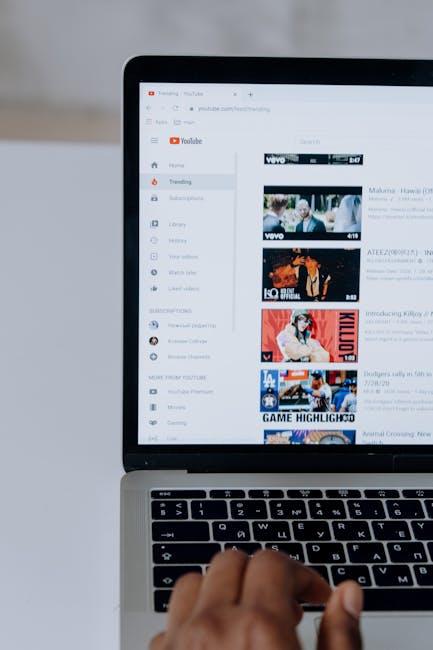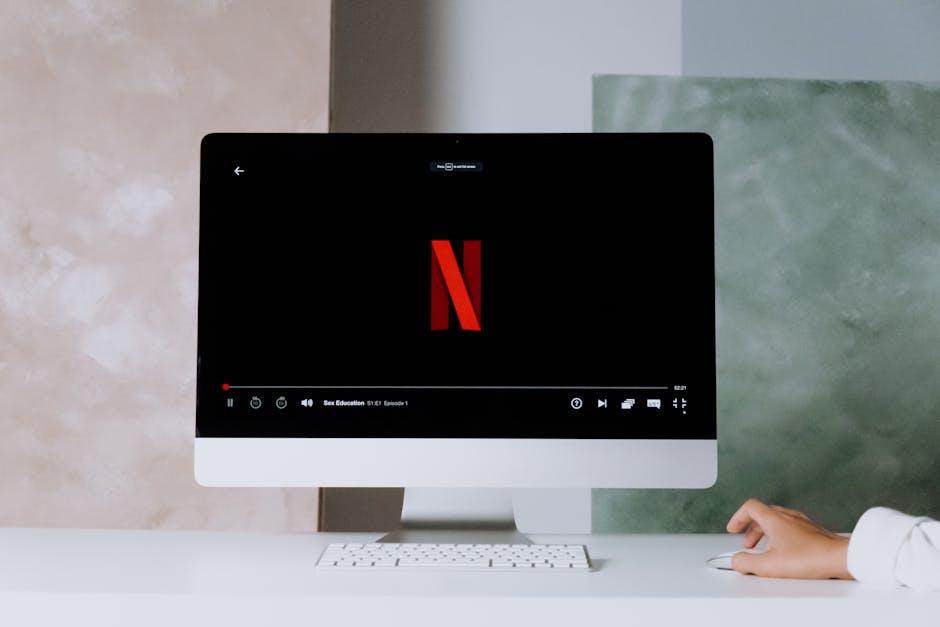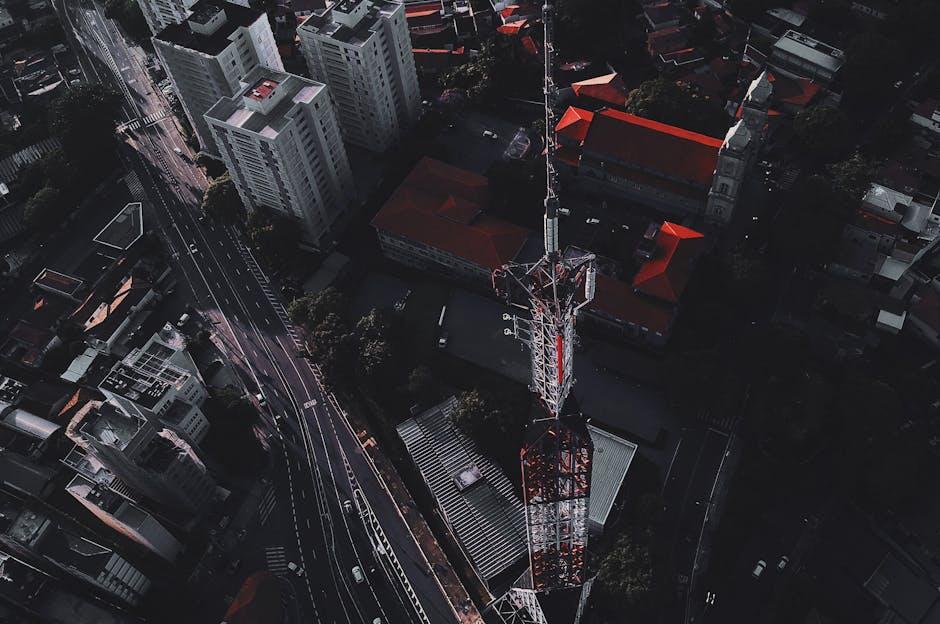You ever found yourself on YouTube, ready to dive into the latest cat videos or those epic DIY tutorials, only to be greeted by the spinning wheel of doom? It’s like waiting for your coffee to brew on a Monday morning—so frustrating! Fast forward to 2024, and it seems like the buffering is more common than the actual videos. So, why is YouTube so slow? What’s happening behind the scenes that turns our binge-watching dreams into a pixelated nightmare? Grab your snacks and settle in, because we’re about to unravel this digital mystery together—no tech jargon here, just a friendly chat about what’s making our favorite video platform lag behind. Let’s dive in!
The Heavy Load of High-Quality Streaming: Understanding the Bandwidth Struggles
We all love to binge-watch videos on YouTube, but it can be seriously frustrating when it feels like you’re stuck in the slow lane. So, what’s the deal? High-quality streaming requires a robust internet connection, and when millions of users are vying for bandwidth, you can bet that slowdowns are bound to happen. Think of your home internet like a highway: when more cars are on the road, traffic jams are inevitable. The same goes for data traffic; when peak viewing times hit, such as during global events or late-night hours, it can feel like you’re trying to squeeze through an overcrowded intersection.
Moreover, the evolution of video quality doesn’t help either. With the rise of 4K and even 8K content, video files are becoming larger and more demanding. This means that streaming high-resolution videos needs a more substantial chunk of your internet’s bandwidth. If your connection isn’t up to snuff, those precious few seconds of buffering can feel like an eternity. Here’s a quick rundown of what can affect your streaming experience:
- Network Congestion: Too many users on the same network.
- Internet Speed: Check if your ISP provides bandwidth sufficient for your needs.
- Wi-Fi Interference: Obstacles between your device and router can slow things down.
- Device Limitations: Outdated devices can struggle with high-quality streams.
| Quality | Recommended Speed |
|---|---|
| 480p | 1 Mbps |
| 720p | 2.5 Mbps |
| 1080p | 5 Mbps |
| 4K | 25 Mbps |

Navigating Network Traffic: Why Peak Times Can Slow You Down
Ever tried watching your favorite YouTube video during peak hours and felt like you were working with dial-up internet? Frustrating, right? That’s because when more people jump online simultaneously, the data highways get congested, much like a rush hour traffic jam. It’s a classic case of demand outpacing supply. The increased number of users seeking a quick fix for their entertainment cravings puts a strain on the servers, causing delays and buffering. The internet, despite its vastness, has its limits, and peak times can turn even the simplest video into a marathon watch.
Consider this scenario: you’re at a crowded restaurant trying to order dinner, but the waiter is overwhelmed and takes forever to bring your food. Now, imagine that same chaos happening on the internet, where thousands of users are all trying to stream the latest viral video. The solution? Being strategic about your viewing times. Whether it’s early morning or late at night, those off-peak hours can make all the difference, allowing you to glide through your YouTube experience without a hitch. So, if you’re tired of buffering, setting aside time when fewer people are online might just be your best bet!

Device Dilemmas: How Your Tech Can Impact Your Viewing Experience
We’ve all been there: you’re ready to dive into your favorite YouTube video, but instead, you’re greeted with buffering screens that seem to last forever. It’s like showing up to a concert only to find out the opening act is taking a year to set up. Your viewing experience can be dramatically influenced by the device you’re using, and it’s way more than just your Wi-Fi connection. Older devices often struggle with higher resolutions or the latest app functionalities, and that can lead to a sluggish, far-from-ideal experience. It’s almost like trying to race a Cadillac in a go-kart—sure, the go-kart is cute, but it’s no match for that smooth ride.
But it’s not just about age; device compatibility plays a huge role too. Here are a few things to keep in mind when evaluating your tech:
- Operating System Updates: Outdated software can hinder performance.
- Browser Choice: Some browsers are optimized better for video streaming than others.
- Screen Quality: A device with lower resolution won’t do justice to HD content.
Each of these can either boost or diminish your video experience significantly. If you’ve been experiencing delays, maybe it’s time to reevaluate what you’re using and consider an upgrade. It’s like upgrading from instant coffee to a freshly brewed cup; the difference is palpable, and your eyes will thank you for it!

Quick Fixes to Speed Up Your YouTube: Simple Tips for a Smoother Ride
Is your YouTube experience feeling a bit sluggish? You’re not alone! A slow-loading video can be more frustrating than being stuck in traffic. Fortunately, there are some quick fixes you can try to get back on the fast lane. First off, check your internet connection. Sometimes it’s as simple as reconnecting to Wi-Fi, or even switching from Wi-Fi to cellular data. Consider rebooting your router—it’s like giving it a little nap before it gets back to work. Secondly, clear your browser’s cache. Think of it as decluttering your mind before diving into a new task. Just head into your settings, find the privacy option, and wipe away that unwanted data that’s slowing everything down.
If you’re streaming on a device like a smart TV or gaming console, make sure its software is up-to-date. Outdated apps can be the equivalent of using a map from the ’90s—it may work, but it’s definitely not efficient! You can also lower the video quality temporarily; instead of 4K, why not drop it to 720p? This can alleviate buffering like a cool breeze on a hot day. Don’t forget to explore your extensions and disable any that could interfere with streaming. Here’s a quick table to help you keep track of these easy fixes:
| Quick Fix | Description |
|---|---|
| Check Internet Connection | Reconnect to Wi-Fi or switch to cellular data. |
| Clear Browser Cache | Wipe away old data to declutter performance. |
| Update Software | Keep devices and apps current for optimal function. |
| Lower Video Quality | Reduce to 720p for smoother playback. |
| Disable Extensions | Turn off those that might block or slow down streams. |

The Conclusion
And there you have it, folks! We’ve peeled back the layers on why YouTube’s been dragging its feet a bit more than usual in 2024. From the staggering increase in content and viewers to the ever-evolving tech challenges, it’s clear that this beloved platform is juggling a lot on its plate. So, next time your video takes a while to load, remember that it’s not just you; it’s a chorus of millions tuning in from around the globe.
But don’t let the slowdowns get you down—YouTube is constantly working on improvements and optimizations. Just imagine it like a blockbuster movie getting a little too crowded at the box office. With a bit of patience, we’ll all be enjoying smoother streams in no time!
Have you noticed any changes in your YouTube experience? Or maybe you have some tricks up your sleeve to boost those loading speeds? Drop your thoughts in the comments below! Thanks for joining me on this exploration, and let’s keep the conversation going. Happy streaming!

